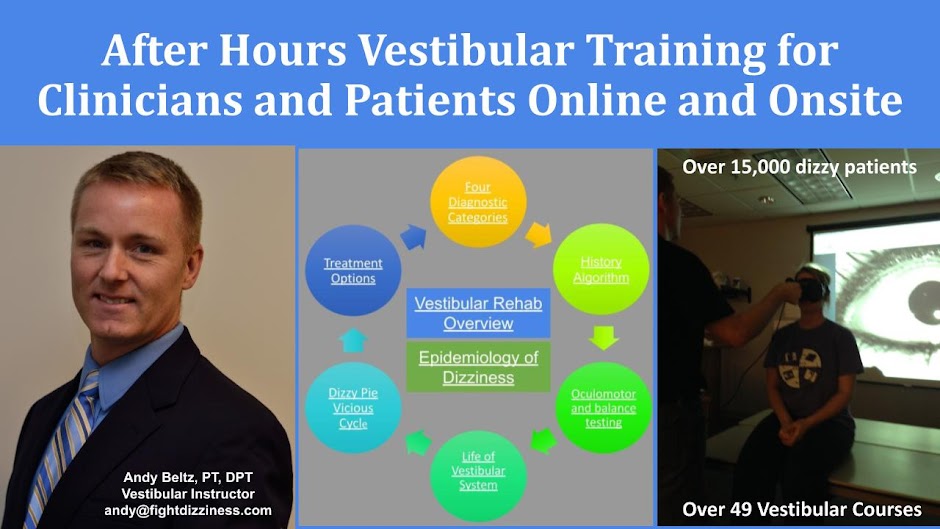The following are some possible answers to her question:
Interesting. Perhaps the torsional nystagmus was more intense the second time because:
- More caclicum crystals dumped out during the first Dix Hallpike and Epley.
- The first Epley "mobilized" any adhered calcium crystals (silent debris) so there were more actively available for the second Dix Hallpike. This adherence with a possible "bottle neck" in the canals prevented them from returning the first time. If this "bottle neck" theory were true, whatever caused it during the first CRM must have been gone if the second and third CRMs were a success.
- The first Epley/Dix Hallpike was not done as quickly as the second...thereby, the first did not create enough momentum to reposition the otoconia the first time. The second may have been faster, caused more nystagmus, but did a better job of shooting the otoconia through the tubes and back to their happy homes.
- The first Epley/Dix Hallpike caused otoconia to be repositioned into the client's lateral canal. This may have caused a more intense lateral nystagmus with the subsequent retest.
- The second Dix Hallpike may have caused otoconia to dump out into her lateral canal.

No comments:
Post a Comment